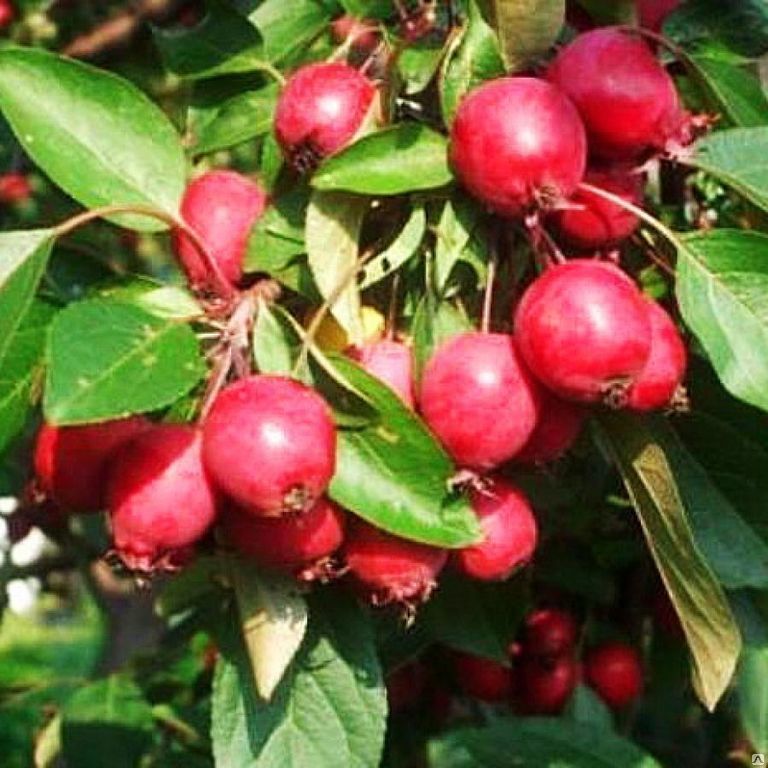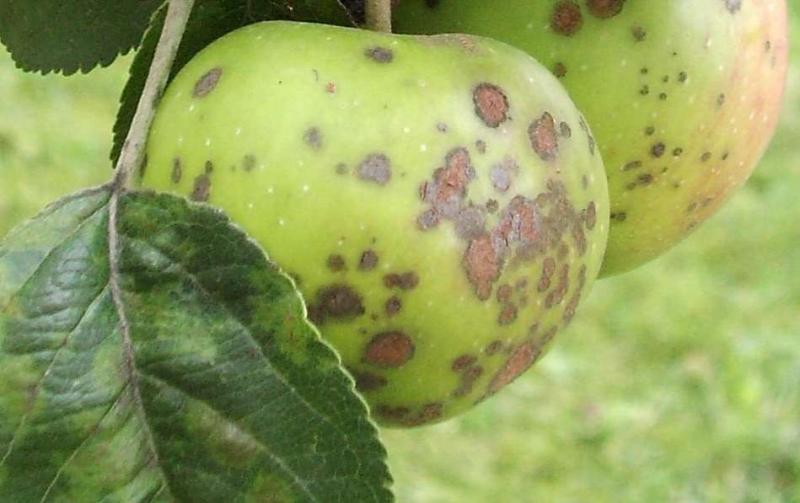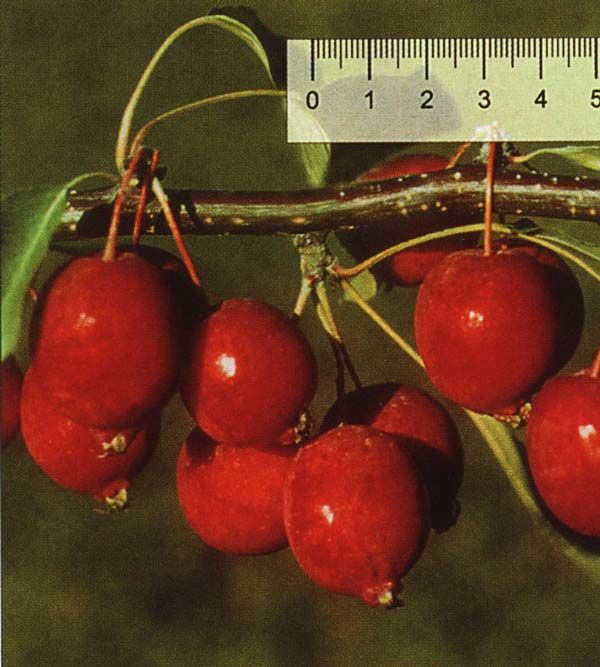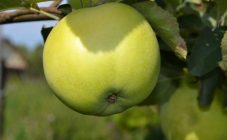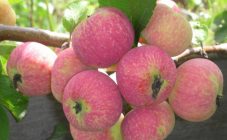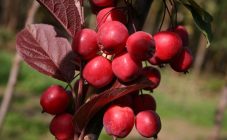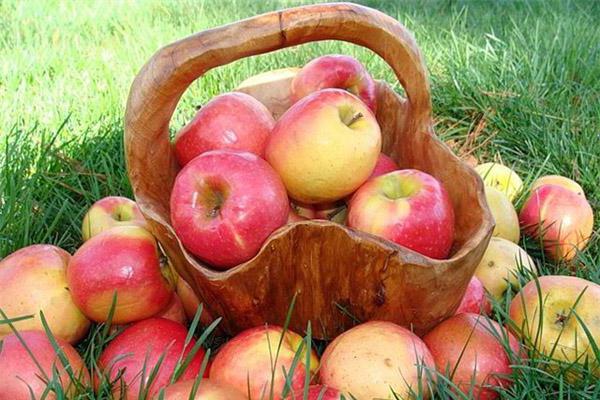Content:
Apple trees are members of the rose family and are grown all over the world for food or decorative purposes. The apple-tree Kitayka is found in different countries and in the name, which it owes to the similarity with the Chinese plum, unites several varieties with similar qualities: Long, Belfleur, Kerr, Kitayka anise, Kitayka dessert. All of them occurred as a result of crossing Siberian berry apple trees with cultivated varieties, endowed with unpretentiousness and resistance to cold weather.
Kitayka long appeared in the United States thanks to the scientist Dank Hansen, who in 1917 crossed two Russian varieties by hybridization. The seeds were stratified before planting. After a successful crossing, the apple tree returned safely to its homeland, and even zoning took place in several cold regions. The apple tree for a long time belongs to the crabapple group according to the American classification, so in Russia it can be classified as a ranetka. This variety also has popular names: Slate, Long, or simply Kitayka.
Description and characteristics of the apple tree Long
Like all Kitayki, it is resistant to frost and dry weather for a long time, it can grow on different types of soils and in places with any illumination. This variety withstands the harsh winter conditions and heat of the southern regions thanks to the deep bedding of the root system.
Two-year or three-year-old seedlings can withstand a transplant, but in other cases, the apple tree should be planted for a long time to a permanent place, otherwise it will take root poorly. Often, Kitayka Long acts as a rootstock for grafting, but in this case, you need confidence in compatibility so that tissue rejection does not occur.
The variety Long white-flowered is not self-pollinating, the tree requires pollinating insects. The large apple blossom and sweet smell function to attract them in springtime, which at the same time pollinate other plants in the garden.
Apple tree Kitayka Long begins to bear fruit 5 years after planting in open ground. This variety belongs to the early autumn. Harvesting is carried out from late August to early September. Despite the high yield, this variety is perceived by many summer residents as decorative: the tree looks beautiful on the site at any time of the year and has bright, spectacular fruits with a short shelf life. Under normal conditions, apples lie for only 20 days, and they can be kept for 2 months only in a dark and cold place.
Plant and fruit parameters
What is an apple tree of the Kitayka Long variety:
- The tree is highly branched and has a dense, rounded crown. Its height can reach 4 m.
- The branches are straight, directed upwards.
- The color of the bark is brown with gray.
- Leaves are dark green in color, oblong in shape with a finely serrated edge. They often curl up.
- The tree is strewn with small fruits of bright red color, which have an unexpressed saucer. Inside them lies a dense creamy flesh with red veins.It has a strong aroma and wine-sweet taste. On average, 1 apple weighs 15-20 g.
Pests and diseases
Kitayka Long is characterized by an average resistance to diseases. All diseases to which this apple tree is susceptible affect the decorative qualities of the tree. Among them:
- black cancer;
- cytosporosis;
- bacterial burn;
- leaf roll;
- green aphid;
- apple moth;
- flies.
This variety of Kitayka is resistant to scab.
Despite the fact that many summer residents are unhappy with the taste of apples for a long time and consider them too sour, the fruits can be eaten fresh. But still, they are more often used for homemade preparations or cooking hot dishes: wine, jam, preserves, compotes, desserts, stuffed goose or duck. When canning, these red apples are often put whole in jars, where they look great, and pastries with the addition of jams and fruit preserves have a bright taste.
Like all apples, the fruits of Kitayka Long contain pectin, which removes harmful substances from the body, fibers that help lower blood cholesterol levels, and chlorogenic acid, which affects the body's processing of oxalic acid and contributes to healthy liver function. The apple peel contains quercetin, which together with vitamin C prevents the negative effects of free radicals. After heat treatment, most of the nutrients disappear, therefore, apples are recommended to be consumed fresh for medicinal purposes. They have a beneficial effect on the following health problems:
- avitaminosis;
- anemia;
- lack of appetite;
- violation of the digestive tract;
- metabolic disorders;
- constipation;
- heart attacks.
Growing features
When growing an apple tree for a Long time and creating optimal conditions for it, you should start by choosing a place for planting:
- The soil should be slightly acidic, sandy loam, loamy or floodplain, leached chernozem is suitable. If it is possible to carry out regular fertilizing, Kitayka is planted for a long time on sandy soils. Kitayka reacts well to light soil with a moderate degree of moisture.
- Moisture on the site should not stagnate. If there is a possibility of flooding the plant, you need to create drainage, or place a varietal seedling on a small hill.
- It is advisable to choose a sunny place on the site or slightly shaded. In constant shade, the apple tree will produce fewer fruits with reduced sugar content.
Apple trees are planted in early spring or in autumn (before October 15) at a distance of 6 m from each other. Plant roots are pre-soaked in warm water for a day, and before being placed in the ground, they are dipped in a clay mash.
A pit is dug with a diameter of 1 m and a depth of up to 80 cm. It is filled by a third with the following components: a fertile layer of earth, wood ash, rotted humus, peat, 260 g of superphosphate and 120 g of potassium sulfate are added. A peg is driven into the center of the pit, an apple tree sapling is placed nearby and buried in fertile soil.
The trunk circle should be trampled down, a garter should be carried out, as well as watering a young apple tree with settled water and mulching with humus.
Further care
The apple tree is watered for a long time about 5 times a month. For each adult Kitayka, 1 bucket of water is required twice a day, but due to weather conditions, it is possible to adjust the regimen and dosage. Watering in the second half of summer is of great importance due to the formation of fruits.
In order not to get protracted growth of shoots, thereby reducing the tree's resistance to winter, watering the apple trees is usually stopped in August. The exception is dry seasons.
Each watering should be accompanied by mulching with dry grass or sawdust, crushed bark or humus.
Rationing of the yield has a positive effect on the survival rate of the apple tree. In the first flowering, most or all of the flowers are cut off, then half of the green, newly formed fruits are cut off. The apples remaining on the tree will grow larger, taste better, and the apple tree will be able to prepare for the winter period.
Correctly executed pruning has a good effect on the quantity and quality of the crop, helps the apple tree in developing resistance to various diseases. The system is as follows:
- to speed up the process of laying the crown, the branches of the apple seedling are cut off by a third when planting;
- every year, before the buds bloom, dry and damaged branches are cut;
- from the second year, crown formation is carried out, having previously determined 6 main skeletal branches;
- the cut is made at the very base, without leaving hemp;
- shoots lowered to the ground or below the first main branch must be removed;
- weak and gnarled young branches are removed, keeping strong and erect.
As for fertilizing, for the first time after planting, Kitayka Long is fertilized for 2 years. In spring, 3 weeks before flowering, the apple tree is sprinkled with urea or ammonium nitrate and organic matter. The second feeding is carried out with a solution of nitrophoska (250 g of the drug per 1 bucket of water) during the formation of the ovary. After harvesting, 150 g of potassium sulfate and 250 g of superphosphate are diluted in 1 bucket of water and the tree is fed. In the autumn, before the start of frost, the apple tree trunk circle is mulched with humus in order to increase the winter hardiness of Kitayka.
Disease prevention
Treatment and preventive measures depend on the type of disease or pests:
- Cytosporosis... Hom is used during the period of bud swelling and copper sulfate shortly after flowering.
- Scab... Despite Kitayka's resistance to this disease, she can still get it. Then urea, copper sulfate, nitrofen, chorus, hom or speed are used.
- The black cancer... This disease adversely affects the appearance of Kitayka. The damaged bark is removed and special preparations are used.
- Yablonnaya mole... Chlorophos solution will save.
- Green aphid... The entire crown is sprayed in large quantities with a solution of soap and tobacco.
To protect Kitayka from rodents and cold, the trunk can be covered with spruce branches or roofing felt in late autumn. In early spring, last year's grass and leaves are harvested around the apple tree, and the soil is loosened with a rake. The stem is whitewashed with a solution of slaked lime and copper sulfate (the lower section of the trunk from the root collar to the first branches is the most vulnerable part of the tree). For seedlings, a chalk solution is used.
Advantages and disadvantages of the variety
The variety for Long will not have as many disadvantages as there are positive aspects in its cultivation:
- use for decoration;
- resistance to many diseases;
- high productivity;
- various uses of fruits;
- winter hardiness;
- early fruiting;
- apples do not crumble.
Minuses:
- short shelf life of fruits;
- small size of apples;
- controversy over taste.
Apple tree Kitayka Long has a wide range of applications and a lot of positive qualities, so many summer residents are convinced of the need to grow it on their plots.
